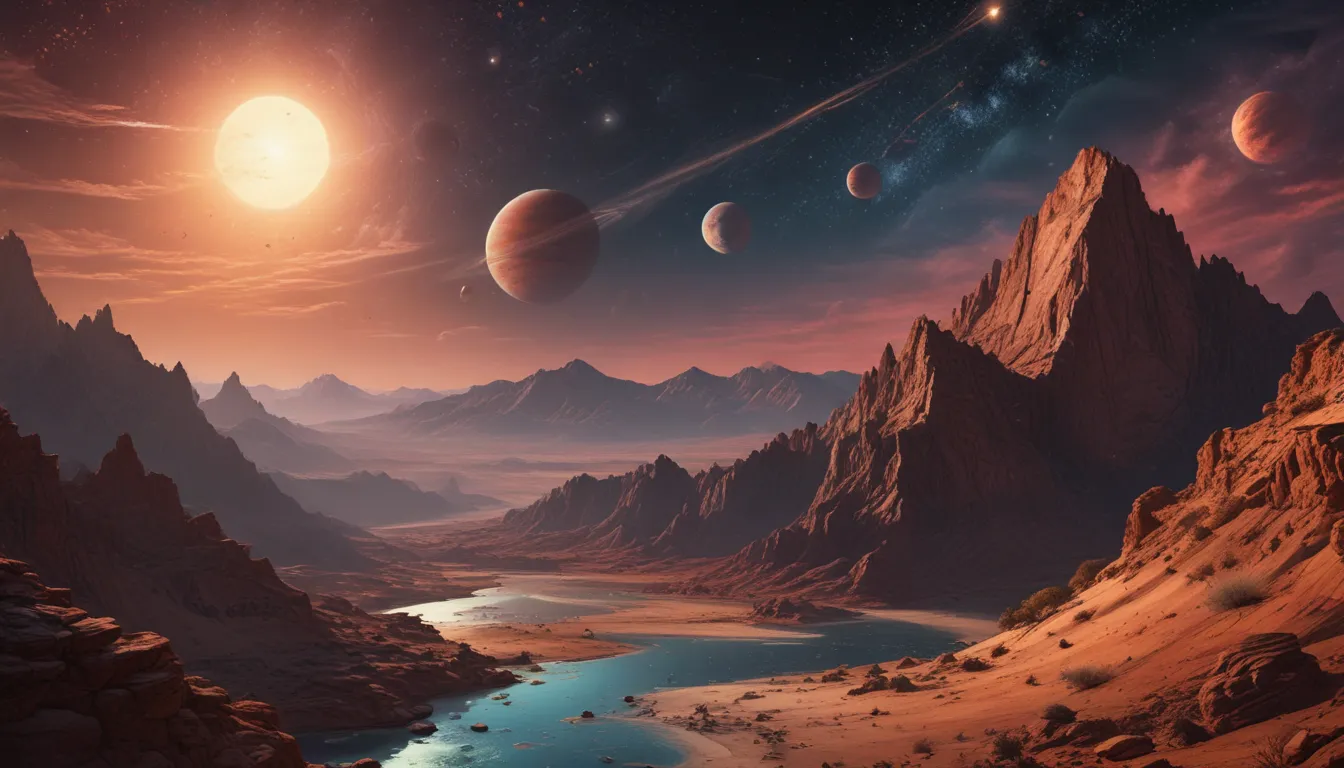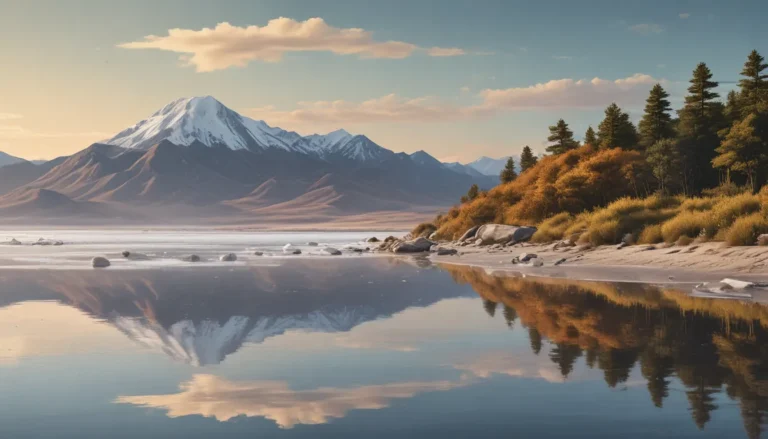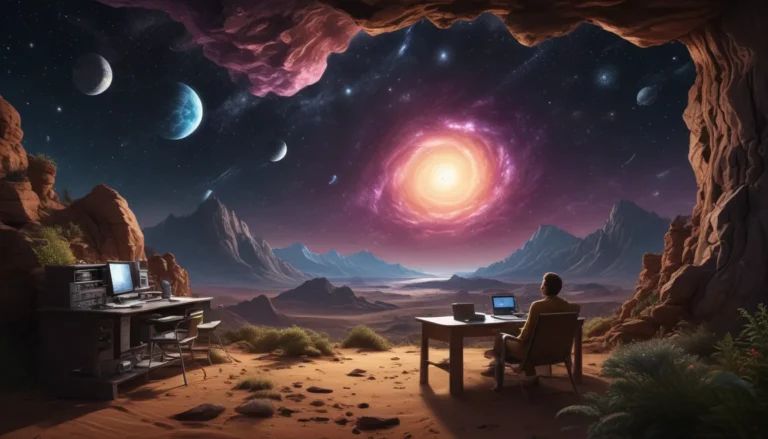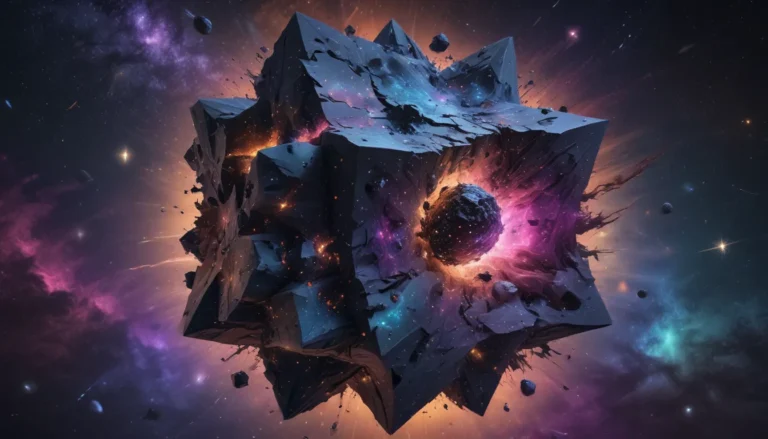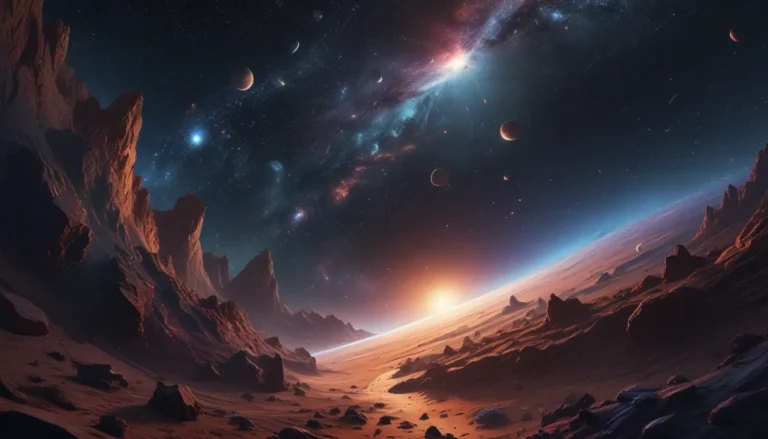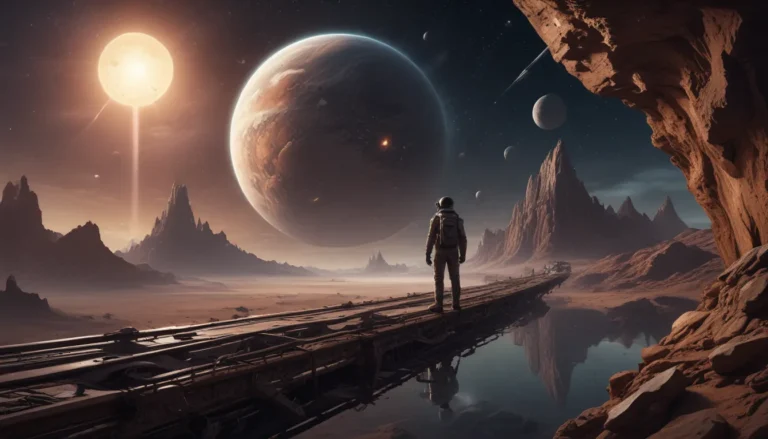The pictures we use in our articles might not show exactly what the words say. We choose these pictures to make you interested in reading more. The pictures work together with the words but don’t take their place. The words still tell you the important facts.
Are you ready to embark on an exhilarating journey through the mesmerizing world of planetary geology? From the scorching surface of Mercury to the icy terrains of Pluto, each celestial body holds its own secrets waiting to be unraveled. In this article, we will delve into the captivating field of planetary geology and uncover 18 fascinating facts that will leave you in awe. Join us as we explore the colossal impact craters on the Moon, the towering volcanoes on Mars, and the dynamic weather patterns on gas giants like Jupiter and Saturn.
Unveiling the Marvels of Planetary Geology:
-
Planetary geology reveals surprising features: Planetary geology, also known as astrogeology, is the study of geological features and processes on celestial bodies like planets, moons, asteroids, and comets. It helps us understand the formation and evolution of these celestial wonders.
-
The Solar System’s geological diversity: From Mars’ Olympus Mons, the largest volcano in the solar system, to the geysers of Saturn’s moon Enceladus, planetary geology unveils the diverse geological processes and history of the universe.
Discovering Unique Geological Features:
-
Mars: Home to Olympus Mons: Olympus Mons, the massive volcano on Mars, stands at a towering height of roughly 13.6 miles (22 kilometers), almost three times the height of Mount Everest. Its colossal size is due to the absence of plate tectonics on Mars.
-
Jupiter’s Moon Io: A Volcanic Wonderland: Io, one of Jupiter’s moons, boasts over 400 active volcanoes on its surface, spewing lava and sulfur compounds due to tidal heating caused by Jupiter’s gravitational pull.
-
Valles Marineris on Mars: This canyon system on Mars stretches over 2,500 miles (4,000 kilometers) and reaches depths of up to 6.2 miles (10 kilometers), dwarfing the Grand Canyon on Earth.
Uncovering Mysteries of Celestial Bodies:
-
Saturn’s Moon Enceladus: Geysers in Space: Enceladus, one of Saturn’s moons, features geysers that shoot jets of water vapor into space, hinting at a subsurface ocean beneath its icy crust.
-
The Moon: Not Just a Dead Rock: Contrary to popular belief, the moon experiences moonquakes caused by tidal forces from Earth and the sun, as well as the cooling and shrinking of its interior.
-
Venus: A Younger Surface Than Expected: Data from NASA’s Magellan mission revealed that Venus has a comparatively young surface shaped by extensive volcanic activity, challenging previous assumptions about its age.
Unraveling Planetary Mysteries:
-
The Vredefort Crater on Earth: The Vredefort Crater in South Africa, the largest verified impact crater on Earth, was formed about 2 billion years ago by a massive asteroid or comet.
-
Evidence of Water on Mars: Discoveries of ancient lakebeds, river channels, and water-formed minerals suggest that Mars was once a wet and habitable planet.
-
Venus: A Hostile Atmosphere: With a thick carbon dioxide atmosphere and surface temperatures over 800 degrees Fahrenheit (427 degrees Celsius), Venus is the hottest planet in the solar system.
Enchanting Features of Celestial Bodies:
-
Mercury’s Surprising Iron Core: Despite its small size, Mercury boasts a large iron core, making up about 85% of its volume, likely a result of a catastrophic collision early in its history.
-
Europa’s Subsurface Ocean: Europa, one of Jupiter’s moons, harbors a subsurface ocean beneath its icy crust, creating potential for life due to tidal forces from Jupiter’s gravity.
-
Ceres: The Largest Asteroid: Ceres, classified as a dwarf planet, is the largest object in the asteroid belt with a diameter of about 590 miles (940 kilometers).
Marvels of the Solar System:
-
Jupiter’s Great Red Spot: The Great Red Spot is a massive storm on Jupiter that has been raging for centuries, large enough to fit two or three Earths inside it.
-
Titan’s Methane Lakes: Titan, Saturn’s largest moon, features lakes and rivers of liquid methane and ethane, a unique feature in the solar system.
-
The Moon’s Migration: Due to tidal forces, the moon is slowly moving away from Earth at a rate of about 1.5 inches (3.8 centimeters) per year, affecting Earth’s rotation.
Journey Into Planetary Geology:
In conclusion, planetary geology offers a captivating lens through which we can explore and understand the geological wonders of celestial bodies beyond Earth. From mapping landscapes to investigating impact craters, each discovery adds layers of insight into the formation, evolution, and dynamics of planets and moons within our solar system. With advancements in technology and space exploration missions, scientists continue to unravel the mysteries of planetary geology, sparking curiosity and expanding our understanding of the universe.
FAQs - Unveiling the Mysteries:
-
What is planetary geology?: Planetary geology is the study of geological features and processes on planets, moons, and other celestial bodies within our solar system.
-
Why is planetary geology important?: Planetary geology provides valuable insights into the formation, evolution, and potential for life on celestial bodies, expanding our understanding of the universe.
-
How do scientists study planetary geology?: Scientists study planetary geology through spacecraft missions, remote sensing techniques, and analyzing meteorites and moon rocks.
-
What are some interesting facts about planetary geology?: Fascinating facts include cryovolcanoes on Saturn’s moon Enceladus, ancient riverbeds on Mars, and Io’s status as the most volcanically active body in the solar system.
-
How does planetary geology contribute to our understanding of the universe?: By studying geological features, planetary geology offers insights into the broader geological conditions and potential for life in the universe.
Explore the wonders of planetary geology and dive deeper into the captivating world of celestial bodies that shape our universe. With each discovery and exploration, we gain a deeper appreciation for the vastness and diversity of our solar system. Join us on this enthralling journey through the marvels of planetary geology.
